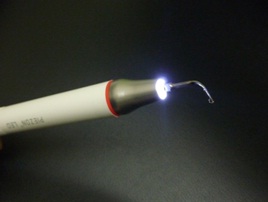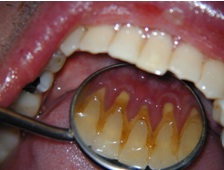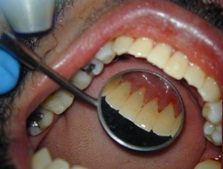Hygiene
Why is it important to have regular cleaning?
Plaque is a sticky substance that adheres to tooth structure and is teeming with bacteria. Over time, plaque becomes calcified (hardens) and at this stage, it becomes what is called calculus. Plaque and calculus are actually irritants to the tissues of your mouth. The reaction of your body to the irritants and the subsequent gum inflammation, bleeding, gum recession and eventual bone loss around the teeth constitute periodontal (gum) disease.
The earliest stage of periodontal disease is called gingivitis (which is reversible) and is characterized by bleeding gums, especially when one brushes and flosses. If the disease is not addressed, it may progress to periodontitis, which is far more destructive, and is characterized by further gum deterioration, bone loss, and ultimately tooth loss.
Scaling and root planing (cleaning) are the most common form of treatment for periodontal disease. Scaling removes calculus (also called tartar) and plaque from the tooth surface above and below the gum line. Root planing smoothes the root's surface and removes any remaining calculus. When the amount of plaque and calculus to be removed is extensive, the area may need to be numbed to make the procedure comfortable for you.
A combination of sonic and hand instruments are used in the scaling and root planing procedures. The sonic instruments remove the large deposits of plaque and calculus. Hand instruments are then used to remove any remaining tartar and ensure all surfaces of the crown and root are clean and free of bacteria. Sensitivity and soreness may be present a few days following treatment and usually can be relieved with over-the-counter pain relievers.
Piezo ultrasonic scaler |
 |
 |
 |
Before |
After |
A follow-up visit may be scheduled following treatment to check on the improvement of the gingival status, and at regular intervals (3 month and 6 month intervals are typical) thereafter to monitor the disease. The goals are to eliminate the active inflammation caused by bacteria and reduce the periodontal pockets around the teeth so they cannot trap plaque or calculus thus maintaining the present bone height around the teeth.
Your oral health is a window to your overall health. There is strong medical evidence linking diabetes and heart disease with gum disease. Pregnant women with poor oral health are at higher risk of delivering pre-term, low birth weight babies than women with good oral health.


